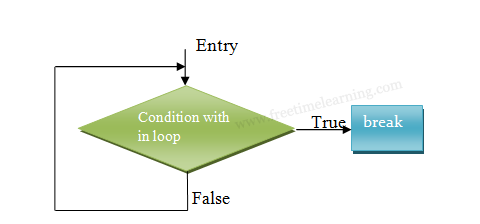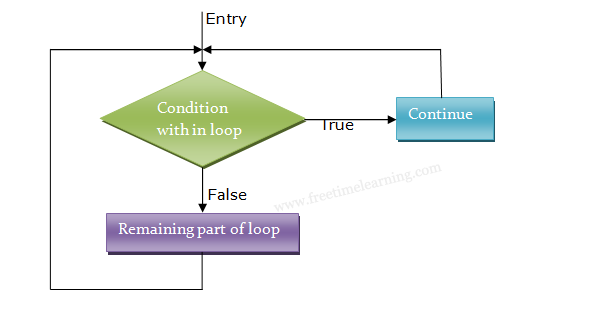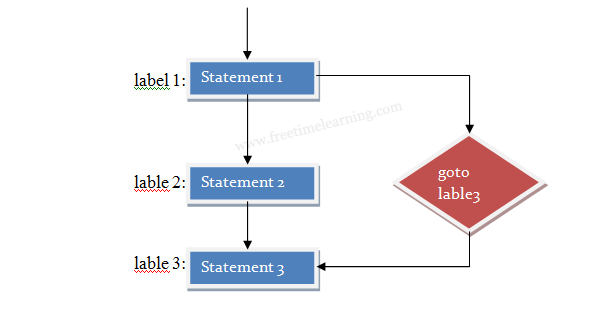The jump statement in c break syntax can be while loop, do while loop, for loop or switch case.

#include <stdio.h>
#include <conio.h>
void main(){
int i=1;//initializing a local variable
clrscr();
for(i=1;i<=10;i++){
printf("%d ",i);
if(i==5) //if value of i is equal to 5, it will break the loop
{
break;
}
}//end of for loop
getch();
}
1 2 3 4 5
The continue statement is used to bypass the remainder of the current pass through a loop.
The loop does not terminate when a continue statement is encountered. Instead, the remaining loop statements are skipped and the computation proceeds directly to the next pass through the loop.
The continue statement can be included within a while, do-while, for statement.
It is simply written as “continue”.
The continue statement tells the compiler “Skip the following Statements and continue with the next Iteration”.
In “while” and “do” loops continue causes the control to go directly to the test –condition and then to continue the iteration process.
In the case of “for” loop, the updation section of the loop is executed before test-condition, is evaluated.
The jump statement can be while, do while and for loop.

# include<stdio.h>
void main( )
{
int i=1, num, sum =0;
for(i=0; i < 5; i ++)
{
printf(“ Enter an integer:”);
scanf( “%d”, &num);
if(num < 0)
{
printf(“\nyou have entered a negative number”);
continue ; /* skip the remaining part of loop */
}
sum += num;
}
printf(“The sum of the Positive Integers Entered = % d \ n”, sum);
}
Enter an integer: 7
Enter an integer: 3
Enter an integer: 10
Enter an integer: 15
Enter an integer: 30
The sum of the positive integers entered = 65
C supports the “goto” statement to branch unconditionally from one point to another in the program.
Although it may not be essential to use the “goto” statement in a highly structured language like “C”, there may be occasions when the use of goto is necessary.
The goto requires a label in order to identify the place where the branch is to be made.
A label is any valid variable name and must be followed by a colon (: ).
The label is placed immediately before the statement where the control is to be transferred.
The label can be anywhere in the program either before or after the goto label statement.
In this syntax, label is an identifier. When, the control of program reaches to goto statement, the control of the program will jump to the label: and executes the code below it.

During running of a program, when a statement likes “goto begin;” is met, the flow of control will jump to the statement immediately following the label “begin:” this happens unconditionally.
“goto” breaks the normal sequential execution of the program.
If the “label:” is before the statement “goto label;” a loop will be formed and some statements will be executed repeatedly. Such a jump is known as a “backward jump”.
If the “label:” is placed after the “goto label;” some statements will be skipped and the jump is known as a “forward jump”.
# include<stdio.h>
void main( )
{
int i=1, num, sum =0;
for(i=0; i < 5; i ++)
{
printf(“ Enter an integer:”);
scanf( “%d”, &num);
if(num < 0)
{
printf(“\nyou have entered a negative number”);
continue ; /* skip the remaining part of loop */
}
sum += num;
}
printf(“The sum of the Positive Integers Entered = % d \ n”, sum);
}
Enter a Number: 5
5 is Odd Number.
The return statement terminates the execution of a function and returns control to the calling function. Execution resumes in the calling function at the point immediately following the call. A return statement can also return a value to the calling function.